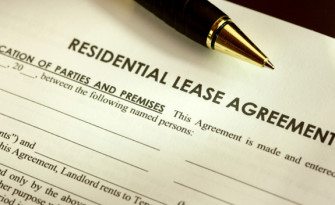Is Month to Month Renting Right for You?

Most renters sign a standard 12-month lease when renting an apartment, but there is another option available: the month-to-month lease. This type of lease certainly isn’t right for everyone, but given the right circumstances, it may be exactly what you need.
Pros of a month-to-month lease
Some renters prefer shorter-term leases for the sheer flexibility they provide to act on opportunities, including moving for work, family, travel or a better apartment down the street.
- Month-to-month leases offer more flexibility. Renting month-to-month gives you the flexibility to move without having to find a subletter or paying to break your lease. If you are looking for a new job or have a temporary job, a month-to-month lease is probably in your best interest. A short-term lease gives you more mobility and allows you to consider jobs that may be outside of your current commuting zone. If you’ve recently moved to a new city and need time to find the right neighborhood to settle down in, a short-term lease provides the chance to get to know the city while living in it.
- There is no charge for breaking your lease. If you sign a 12-month lease, you are legally responsible for those 12 months of rent payments – whether or not you still live in the apartment. One of the perks of renting month-to-month is that you will not incur any charges if you need to break your lease. If you anticipate having to move before the year is up, a month-to-month lease may end up being less expensive in the long run.
- They can easily be converted to a long-term lease. If you begin a month-to-month lease and decide to stay put, that lease can usually be converted into a year-long lease without any adverse effects. If you choose to make the switch to a 12-month lease, you will also be able to lock in a rental rate for the duration of your lease term.
Cons of a month-to-month lease
For renters, there are a few drawbacks associated with short-term apartment leases – and most of those drawbacks will hit you where it hurts: your bank account.
- Month-to-month leases are more expensive. Typically, property managers charge more for a short-term lease, so you end up paying more in the short term. If you continue to renew the short-term lease over an extended time period, you’ll definitely be overpaying.
- Short-term leases are unstable. The flexibility that renting month-to-month gives you also applies to your landlord. Neither of you is locked into a long-term contract, so there’s nothing preventing your landlord from raising your rent or terminating your lease while you’re living in the apartment.
They can affect your credit score. New landlords are likely to pull your credit history, and the more times that report is accessed, the more it can negatively affect your credit score. It could also signal to future landlords that you live an unstable lifestyle. - They’re harder to find. Landlords generally prefer longer apartment leases because it ensures they won’t have to spend money or time turning the unit for the next year. Each time a tenant moves out, the property owner has to advertise the unit and get it ready for the next tenant, which can include cleaning, painting, replacing carpeting and fixing any wear and tear. There is also the potential loss of monthly revenue if the landlord cannot fill the unit quickly. Ultimately, short-term leases are not as cost-effective and are riskier for property managers to offer, which is why you don’t see them as often.
Typically, you’ll see short-term lease options available in markets and neighborhoods where demand is high and supply is limited. With a larger pool of renters than available rental units, landlords in these areas have an easier time handling renter turnover and maintaining occupancy. As a general rule of thumb, landlords will be more willing to sign a shorter lease in times of rapidly rising rents and will want to lock in longer lease terms in times of flat or declining rents.
